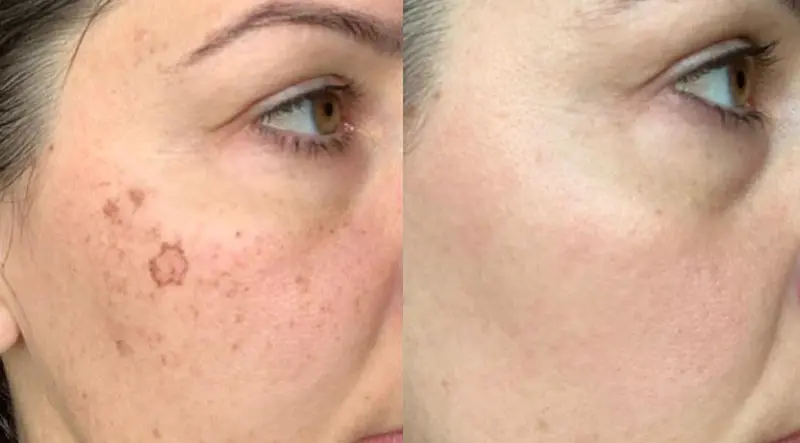
The Surging Popularity of Laser Pigmentation Treatments in the US
In the United States, the demand for laser treatments to address pigmentation issues has been on a rapid rise. Over the past five years, the market for these treatments has expanded by 35%. In 2024 alone, approximately 1.5 million Americans sought laser - based solutions to deal with dark spots, age spots, and other forms of pigmentation. This growth is driven by the increasing awareness of the effectiveness of laser technology and the desire for non - invasive yet powerful skin - rejuvenating options.
Regional Distribution of Treatment Demand
| Region | Percentage of Total Treatments |
|---|---|
| Northeast | 22% |
| South | 25% |
| Midwest | 23% |
| West | 30% |
Top Laser Treatments for Pigmentation
Q - Switched Ruby Laser
The Q - switched ruby laser is a well - established option for treating pigmentation. It emits a specific wavelength of light that is highly absorbed by melanin, the pigment responsible for dark spots. Around 20% of patients with pigmentation problems choose this laser. It is particularly effective for treating freckles, lentigines, and some types of tattoos.
Alexandrite Laser
The alexandrite laser also targets melanin effectively. It has a relatively long pulse duration, which allows for deeper penetration into the skin. Approximately 18% of patients opt for this laser, especially those with darker skin tones and more stubborn pigmentation.
Fractional Laser
Fractional lasers work by creating tiny columns of damage in the skin, stimulating the body's natural healing process and promoting collagen production. They can also target pigmented areas. About 25% of patients select fractional lasers as they can not only fade dark spots but also improve overall skin texture.
Intense Pulsed Light (IPL) Therapy
IPL therapy uses a broad spectrum of light to target multiple skin concerns, including pigmentation. It is a popular choice for mild to moderate pigmentation issues. Around 22% of patients prefer IPL because it is relatively gentle and has a short recovery time.
Picosecond Laser
Picosecond lasers deliver extremely short pulses of energy, which are very efficient at breaking down pigment particles. They are effective for treating a wide range of pigmentation problems, including deep - seated dark spots. Approximately 15% of patients with severe or hard - to - treat pigmentation choose picosecond lasers.
Effectiveness of Laser Pigmentation Treatments
Clinical studies have shown significant results for these laser treatments.
| Treatment Type | Average Reduction in Dark Spot Intensity |
|---|---|
| Q - Switched Ruby Laser | 50% - 70% |
| Alexandrite Laser | 45% - 65% |
| Fractional Laser | 40% - 60% |
| Intense Pulsed Light (IPL) Therapy | 35% - 55% |
| Picosecond Laser | 60% - 80% |
Common Queries
How much do these laser treatments cost?
The cost varies based on the treatment type, the area being treated, and the number of sessions. On average, Q - switched ruby laser treatments can cost between $500 - $2000 per session. Alexandrite laser treatments range from $600 - $2200 per session. Fractional laser treatments may cost $800 - $3000 per session. IPL therapy typically costs $300 - $1800 per session, and picosecond laser treatments can be $1000 - $4500 per session.
Is the treatment painful?
Most patients experience some level of discomfort during the treatment. Topical anesthetics are usually applied to reduce the pain. The pain can range from a mild stinging sensation to a more intense feeling, depending on the laser type and individual pain tolerance.
What is the recovery time?
Recovery times differ for each treatment. Q - switched ruby laser may cause redness and swelling for 1 - 3 days. Alexandrite laser has a similar recovery period of 1 - 3 days. Fractional laser may require 3 - 7 days of recovery with redness and possible peeling. IPL therapy usually has a 1 - 2 - day recovery with mild redness. Picosecond laser may result in redness and swelling for 2 - 5 days.
Conclusion and Recommendations
Laser treatments offer a variety of effective ways to say goodbye to dark spots. When considering these treatments, it is crucial to consult a qualified dermatologist or laser specialist. They can assess your skin type, the nature and severity of your pigmentation, and recommend the most suitable laser treatment. Follow the post - treatment care instructions carefully, such as avoiding sun exposure and using recommended skincare products. With the right laser treatment, you can achieve a more even - toned and clear complexion.
